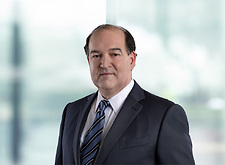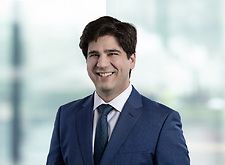Governor Cuomo Issues Executive Order Mandating Post-Travel Quarantine
On June 24, 2020, Governor Cuomo signed an Executive Order that requires a 14-day post-travel quarantine for anyone entering New York State from certain states experiencing high rates of COVID-19. The Executive Order took effect at 12:01 a.m. on Thursday, June 25, 2020 and requires strict quarantine procedures for individuals entering New York after travel to a state with a positive test rate higher than 10 per 100,000 residents, or higher than a 10% test positivity rate, calculated over a seven-day rolling average. Non-compliance may subject individuals to civil fines up to $10,000.
This Executive Order and guidance issued under it by the Department of Health create a number of labor and employment challenges for employers.
Ever-Changing List of Impacted States
The list of impacted states will change based on the rates of positive test results in other states. As of June 26, 2020, the Executive Order applies to travel from the following states: Alabama, Arkansas, Arizona, Florida, North Carolina, South Carolina, Texas, and Utah.
Employers will need to continually monitor the list of impacted states and consider the impact on business and personal travel plans for their employees.
In addition, employees traveling to other states need to be mindful of quarantine orders that may apply upon arrival in the other state. For example, as of the date of this alert, Florida requires that travelers from New York quarantine for a period of 14 days from the time of entry or the duration of the individual’s presence in Florida, whichever is shorter.
Exceptions for “Passing Through” and “Essential Workers”
On June 24, 2020, the Department of Health issued Interim Guidance for Quarantine Restrictions on Travelers Arriving in New York State Following Out of State Travel (“DOH Guidance”). The DOH Guidance clarifies that the Executive Order does not apply to individuals passing through one or more of the designated states for a limited duration (i.e., less than 24 hours) through the course of travel. Examples of such brief passage include, but are not limited to, stopping at rest stops for vehicles, buses, and/or trains; or layovers for air travel, bus travel, or train travel.
The DOH Guidance also creates an exception for “essential workers,” subject to restrictions “based on the duration of time in designated states, as well as the intended duration of time in New York” as follows:
Short Term – for essential workers traveling to New York State for a period of less than 12 hours.
- This includes instances such as an essential worker passing through New York, delivering goods, awaiting flight layovers, and other short duration activities.
- Essential workers should stay in their vehicle and/or limit personal exposure by avoiding public spaces as much as possible.
- Essential workers should monitor temperature and signs of symptoms, wear a face covering when in public, maintain social distance, and clean and disinfect workspaces.
- Essential workers are required, to the extent possible, to avoid extended periods in public, contact with strangers, and large congregate settings.
Medium Term – for essential workers traveling to New York State for a period of less than 36 hours, requiring them to stay overnight.
- This includes instances such as an essential worker delivering multiple goods in New York, awaiting longer flight layover, and other medium duration activities.
- Essential workers should monitor temperature and signs of symptoms, wear a face covering when in public, maintain social distance, and clean and disinfect workspaces.
- Essential workers are required, to the extent possible, to avoid extended periods in public, contact with strangers, and large congregate settings.
Long Term – for essential workers traveling to New York State for a period of greater than 36 hours, requiring them to stay several days.
- This includes instances such as an essential worker working on longer projects, fulfilling extended employment obligations, and other longer duration activities.
- Essential workers should seek diagnostic testing for COVID-19 as soon as possible upon arrival (within 24 hours) to ensure they are not positive.
- Essential workers should monitor temperature and signs of symptoms, wear a face covering when in public, maintain social distancing, clean and disinfect workspaces for a minimum of 14 days.
- Essential workers, to the extent possible, are required to avoid extended periods in public, contact with strangers, and large congregate settings for a period of, at least, 7 days.
The term “essential worker” is defined to include certain health care workers and first responders, as well as any individual employed by an entity included on the Empire State Development (ESD) Essential Business list. This is the same list that governed the 100% workforce reduction during Governor Cuomo’s “PAUSE Order.”
Telework and Interaction with COVID-19 Leave Laws
Employees who travel for business or personal reasons to one of the impacted states and who do not meet the standards for one of the exceptions discussed above will need to comply with the quarantine requirements.
Where feasible, employers should consider requiring telework during the quarantine period. Particular attention should be paid to wage and hour issues during any such period of telework.
If telework is not feasible, employers will need to carefully consider whether the employee is entitled to leave during the quarantine period. Governor Cuomo issued a subsequent Executive Order (No. 202.45), which indicates that an employee who engages in voluntary personal travel to one of the states implicated by the post-travel quarantine is not entitled to leave or benefits under the New York State COVID-19 Paid Sick Leave Law. However, leave may, under certain circumstances, be available under the federal Emergency Paid Sick Leave Act and/or employer policies.
Employers considering restricting employee travel to one of the implicated states will also need to carefully analyze any legal limitations to such actions, including under New York Labor Law Section 201-d, the employer’s policies, and, for public employers, any constitutional limitations.
If you have any questions on the new Executive Order or its impact on your business and workforce, please contact Kinsey O’Brien (716.848.1287).
Featured
- Partner
- Partner
- Partner
- Senior Associate
- Partner
- Partner
- Partner
- Partner
- Partner
- Partner
- Partner
- Partner
- Partner
- Partner













